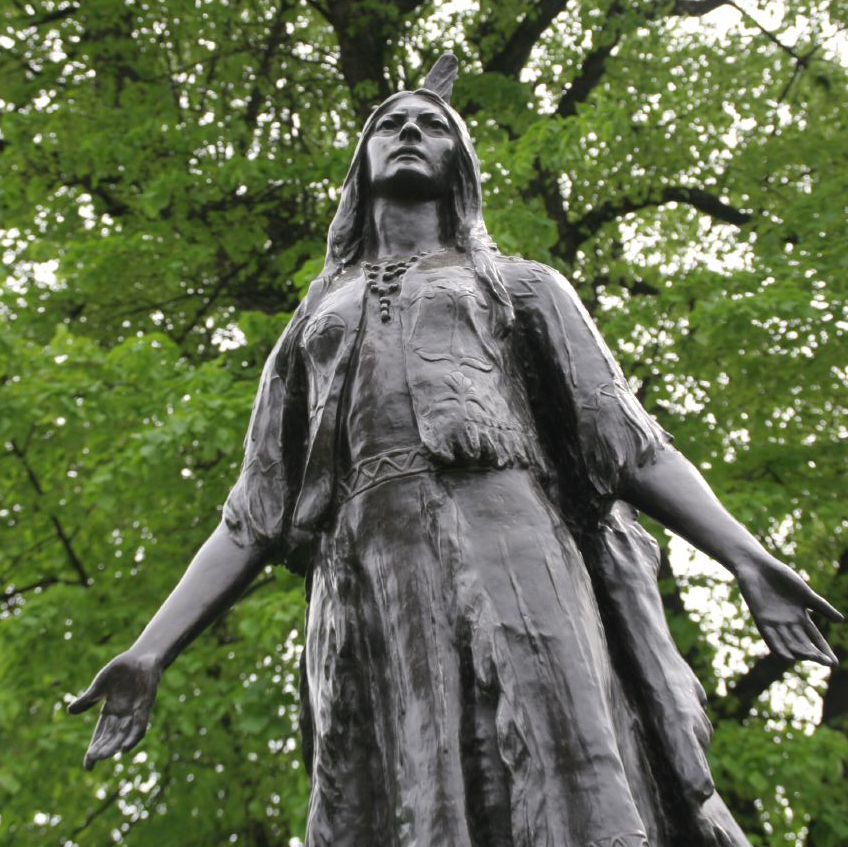
|
By John Martin
A historic listing for a life-size statue of Pocahontas has been updated for the 400th anniversary of her death. Historic England, the United Kingdom’s heritage agency, has renewed the statue’s Grade II listed status and refreshed the record of her life and role in Anglo-American history on its heritage list. Grade II status has also been conferred on a Pocahontas monument in London.
For 17th-century England, Pocahontas became a symbol of how a New World “savage” could be influenced to reflect the manners and deportment of English society. During her time in England, Pocahontas was received by the court of King James I.
Many legends surround the story of Pocahontas, daughter of Chief Powhatan, leader of the tribal network of indigenous Americans in the area surrounding Jamestown. Legend has it that she saved the life of Englishman John Smith in 1807 when she placed her head on his own as her father was poised to execute him with a war club, a story contested by scholars. In any case, Pocahontas won a reputation as a peacemaker and reconciler.
Later she was captured and kept in custody for a year by the English. It was there she converted to Christianity and married colonist John Rolfe, adopting the name Rebecca in memory of the Old Testament patriarch Isaac’s wife.
She accompanied her husband on the 3,000-mile voyage to England in 1617. She died on the return voyage to Virginia and was buried on March 21, 1617, at St George’s Church, Gravesend, the site of the bronze statue. There is uncertainty about the precise location of her grave because the original church was destroyed by fire in 1727.
Her descendants include former first ladies Edith Bolling Galt Wilson and Nancy Reagan.









